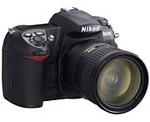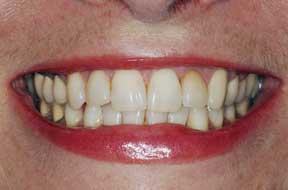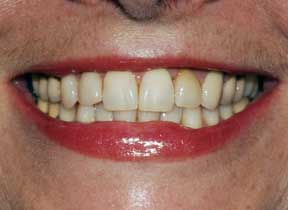Nikon and Canon
I had just finished writing my review of the Nikon D200 and the Canon A630 for this newsletter, when both Nikon and Canon released upgraded versions of their SLR cameras. The improvements to the two cameras, Nikon D70 and Canon Digital Rebel, are very similar, and significant enough that I wanted to include them as cameras I recommend for dental photography.
The new cameras, the Nikon D80 and Canon Digital Rebel XTi, both have increased the size of the LCD screen to 2.5" and increased the megapixel size of the sensor to 10.2mp and 10mp respectively. Originally, I was going to recommend the Nikon D200 for those who want a full bodied SLR camera that has all the 'bells and whistles', and the Canon A630 for those of you who want a simple point and shoot camera. (Simple is a relative term considering the many settings you can choose from on even the simplest point and shoot cameras!)

I still recommend the Nikon D200 as a robust camera that can give you high quality photos. Take a look at some of the photos I made with this camera. Once I understood the controls, I found the camera very easy to use with almost no delay in start up time. It is heavythough, 2 pounds for the body and another 1.7 pounds for the 105 macro lens. If your hands are large, you will like this camera because it will not feel small in your hands, as many of the digital cameras do. I would not recommend this camera for the occasionalcamera user because of its professional attitude.
In the samples, please note that using the on camera flash is great for anterior views, but probaly will not work that well for intraoral views. For intraoral views, I suggest you purchase the full package with the Sigma macro flash and Sigma 105 macro lens.
My comments on the above cameras and accessories are meant to help simplify and demystify what can be an overwhelming amount of information on digital cameras. There are certainly many options available, and my recommendations of these do not exclude other equipment that may be very good for dental photography as well. I will continue to keep a watchful eye on new developments. Please feel free to contact me if you have any comments or questions on this article.
I look forward to hearing from you! - Sam
(Editor's note: Sam Laundon, Owner and Founder of SmilePix, has also been a professional photographer for over 30 years, and was a photography teacher in Boston for 20 years. www.samlaundon.com.









